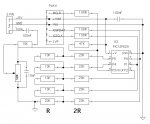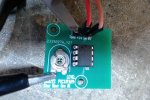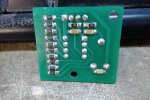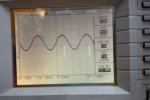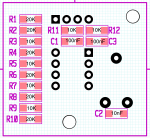I have over 400 of these 8 pin PIC s.
Here is one idea for using them for a sine wave generator.
EDIT 20230411 Updated the circuit to suit the PCB.

This code, in assembler, produces about 127.3hz for CTCSS use.



I found the numbers to reload the timer to for a couple of different CTCSS frequs.....
It would be nice if the timer reload on overflow but...
EDIT: Thanks ray for the code posting pointers.
Any ideas for more uses of these PICs?
Here is one idea for using them for a sine wave generator.
EDIT 20230411 Updated the circuit to suit the PCB.
This code, in assembler, produces about 127.3hz for CTCSS use.
I found the numbers to reload the timer to for a couple of different CTCSS frequs.....
Code:
; reset Timer1 Low (123Hz) 0F
INT movlw 0x17 ; reset Timer1 Low (127.3Hz) 17
movwf TMR1L
movlw 0xFF ; reset Timer1 Hi
movwf TMR1HEDIT: Thanks ray for the code posting pointers.
Any ideas for more uses of these PICs?
Attachments
-
85.2 KB Views: 309
-
1.6 KB Views: 296
Last edited:

